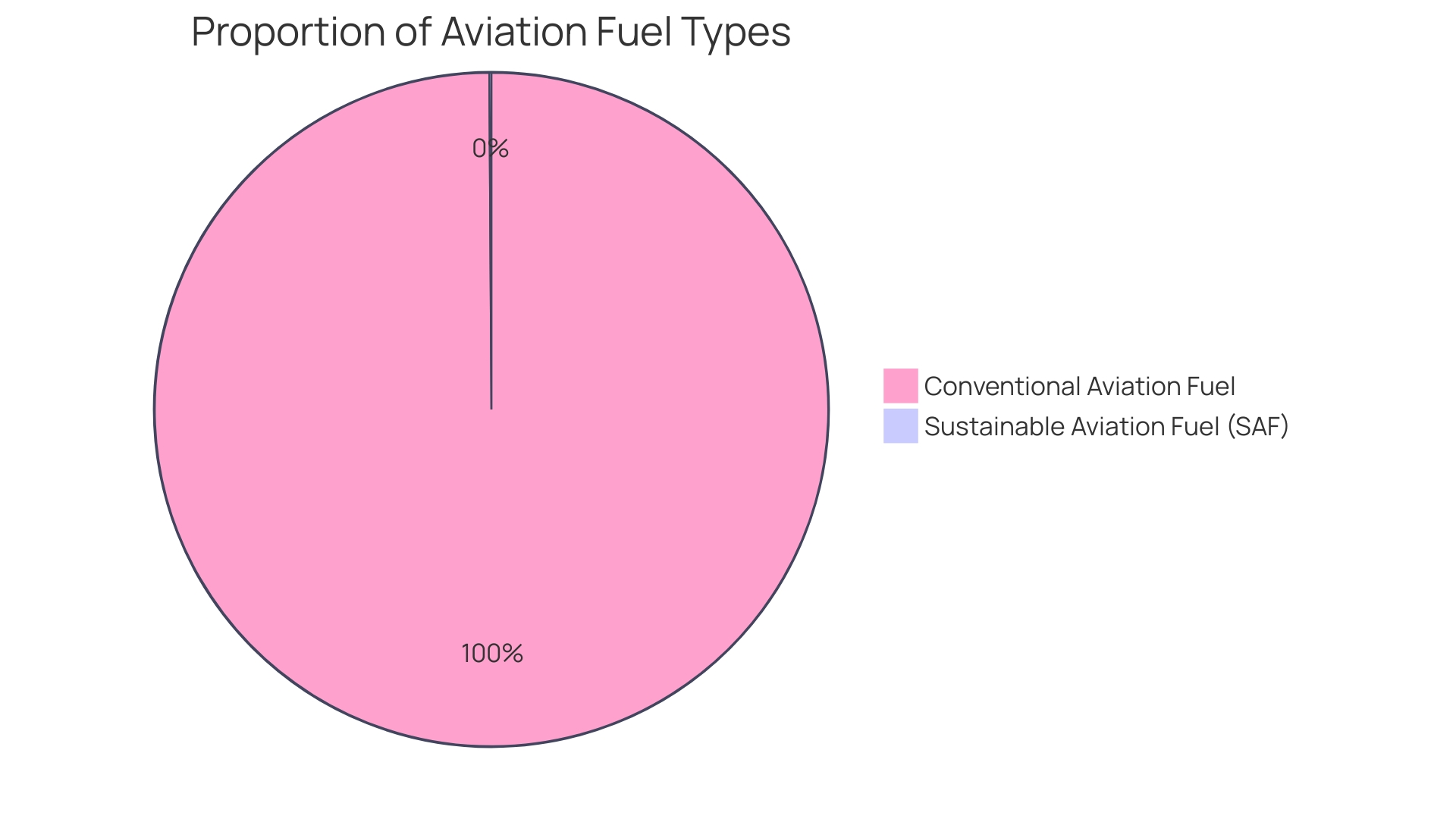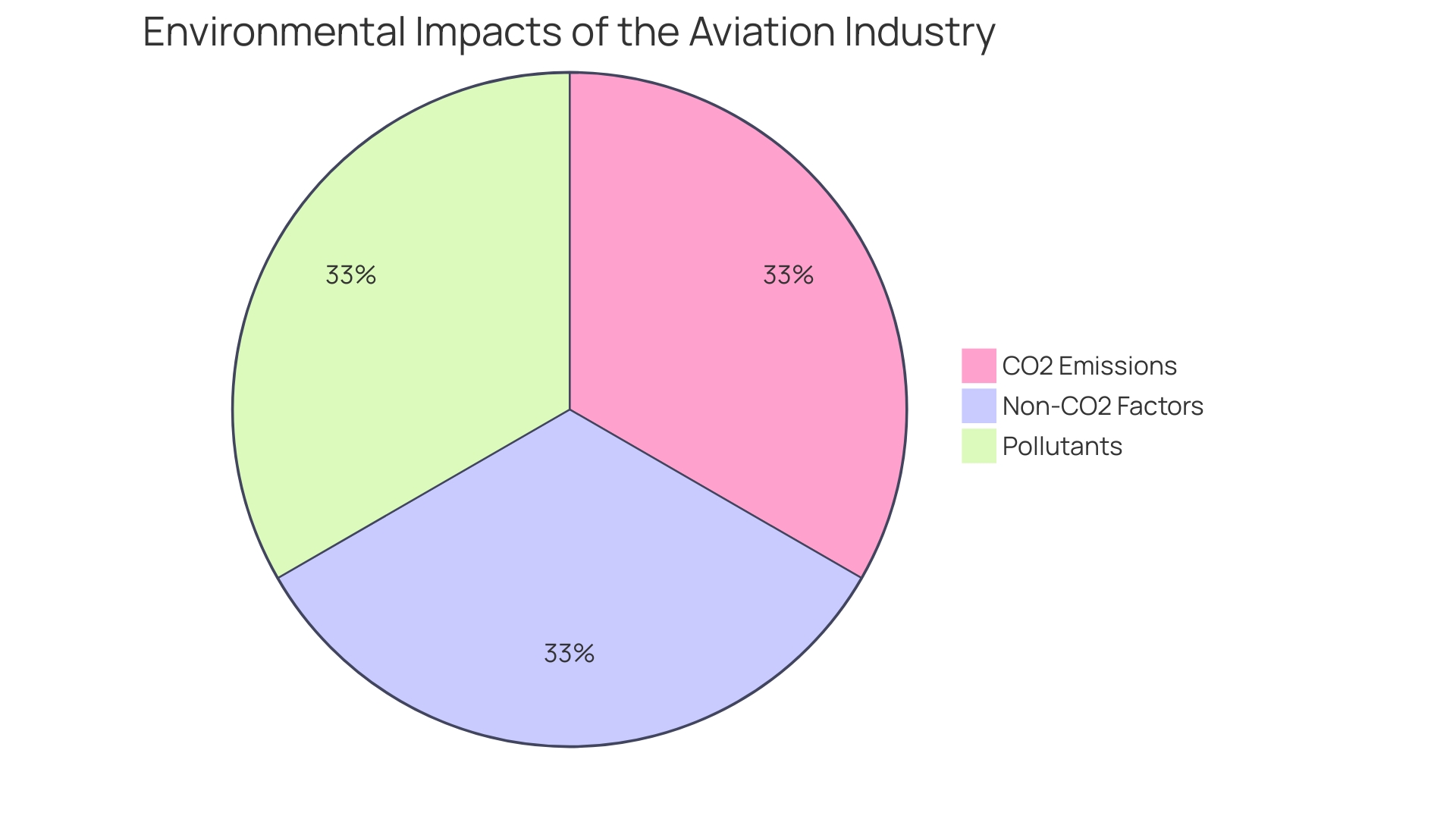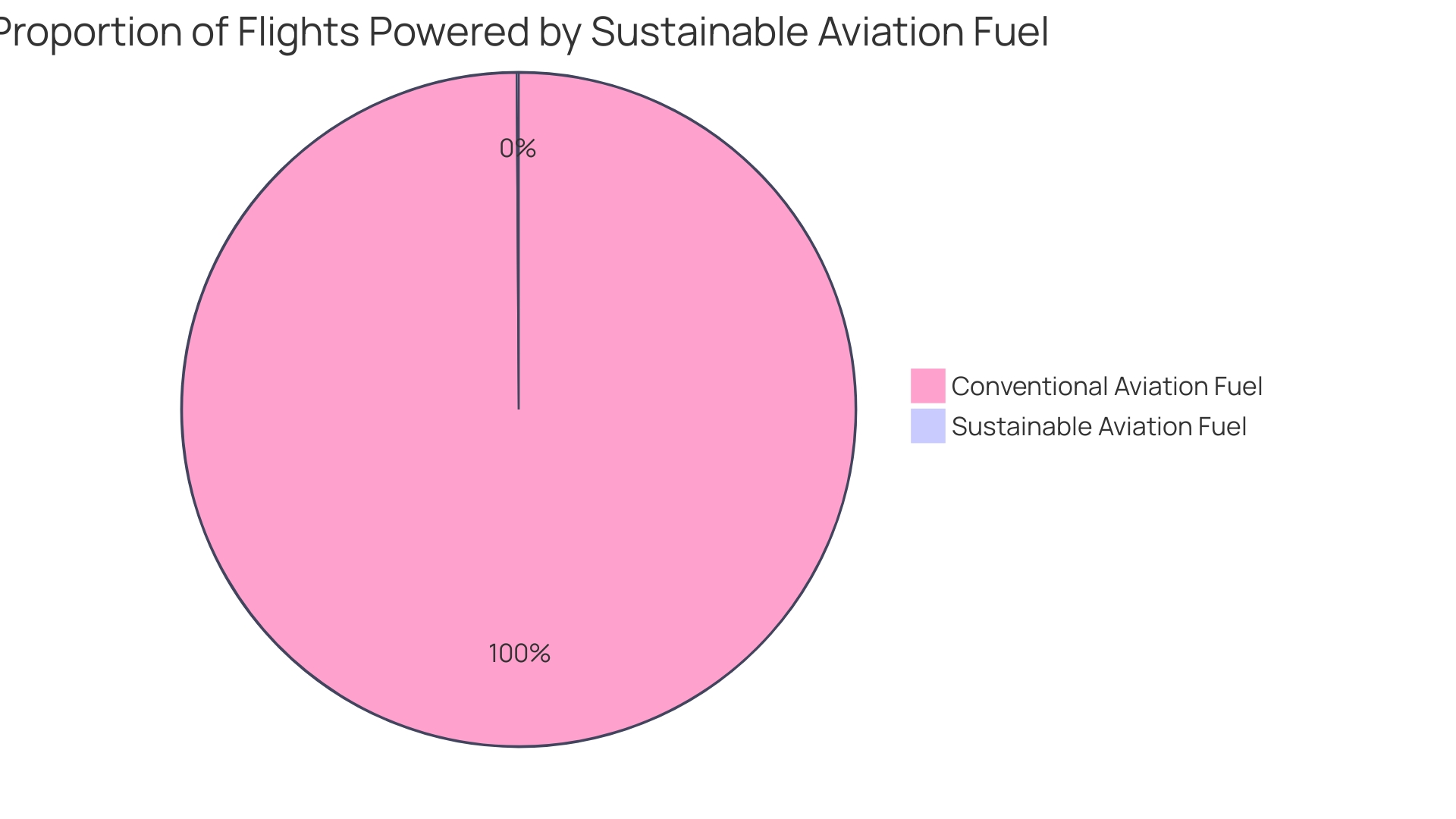Introduction
The aviation industry is undergoing a major transformation as it seeks sustainable alternatives to traditional jet fuel. Ethanol-based sustainable aviation fuel (SAF) has emerged as a promising solution, with its high energy density and renewable qualities. The LanzaJet Freedom Pines Fuels plant in Georgia is leading the way as the world's first ethanol-to-SAF production facility.
This plant represents a significant step towards decarbonizing aviation without compromising safety and reliability. While SAF currently powers only a fraction of flights, advancements in technology and increasing investments are paving the way for the scale-up of production. With aviation emissions continuing to rise, the urgent need for alternative fuel sources like SAF becomes evident.
The Biden administration aims to achieve 100% SAF adoption by 2050, aligning with global efforts to mitigate the environmental impact of air travel. The transition to ethanol-based SAF is not only about environmental stewardship but also about ensuring the industry's resilience and adaptability in a world focused on sustainability.
The Need for Sustainable Aviation Fuels: Addressing Climate Change and Aviation Emissions
The air travel industry, known for its intensive greenhouse gas emissions, is on the verge of a major transformation with ethanol-based jet fuel emerging as a promising substitute for conventional aviation fuel. Sustainable flight propellant (SAF), acknowledged for its substantial energy density and renewable attributes, is crucial for the industry's development. Traditional jet propellant has had minimal changes since the 1950s, and the shift towards SAF is propelled by the necessity to align with climate change mitigation goals.
In the forefront of this revolution is the LanzaJet Freedom Pines Fuels plant in Soperton, Georgia, the world's first ethanol-to-SAF production facility. This plant represents a significant step forward in achieving decarbonized flight. Ethanol, when transformed into jet propellant, provides a sustainable answer without jeopardizing the safety and dependability that commercial flying necessitates.
The air travel sector takes pride in its strong safety culture, however, it encounters a challenging process of acquiring knowledge in embracing novel fuel varieties. To date, SAF powers only a fraction of flights, but with advancements in technology and increasing public and private investments, the scale-up of SAF production is imminent. This innovation is vital, as the sector grapples with the challenge of reducing its carbon footprint without the current feasibility of electrification for large aircraft.
Despite improvements in aircraft efficiency and operational strategies, the inconvenient truth remains: emissions from the aviation sector are rising. The sector's progress in decoupling growth from emissions lags behind other transport sectors, such as automotive, where electric vehicles have led to significant emission reductions. As per the International Council on Clean Transportation, the carbon dioxide emissions from commercial air travel have increased by 32% between 2013 and 2019, highlighting the urgent requirement for alternative sources of energy such as SAF.
Experts emphasize the potential of SAF, with airlines setting ambitious zero-emission goals by 2050. Nevertheless, the present levels of production are inadequate, fulfilling less than 0.2 percent of the sector's energy requirements in the United States. The Biden administration aims to boost this figure, targeting 100 percent SAF adoption by 2050, aligning with the global push to mitigate the environmental impact of air travel.
The shift to ethanol-based SAF is not only about environmental stewardship but also about ensuring the industry's resilience and adaptability in a world increasingly defined by sustainability metrics.

Case Study: LanzaJet’s Freedom Pines Fuel Facility - A Pioneer in Ethanol-to-Jet Fuel Production
LanzaJet's Freedom Pines Fuel Facility has gained considerable recognition as it leads the conversion of ethanol to jet propellant, marking a significant step towards sustainable air travel. With air travel contributing approximately 2% of global energy-related CO2 emissions, the search for viable solutions to decarbonize this sector is imperative. The establishment in Soperton, Georgia, is the initial of its type, utilizing inventive technology to generate sustainable air travel propellant (SAF) from ethanol. This breakthrough mirrors the industry's shift towards cleaner fuels, a pressing need given the limitations of battery and hydrogen-powered alternatives, which entail costly aircraft redesign and airport retrofitting.
The production of SAF at LanzaJet's plant utilizes sustainable feedstock and waste-based solutions, aligning with the International Civil Aviation Organization's sustainability criteria. Not only does this represent a technical breakthrough, but it also offers economic promise, with the potential for scaling to meet the demands of reducing the carbon footprint of air travel. The grand opening of this groundbreaking facility signifies a momentous step forward, with airline titans like Delta, Air France, and International Airlines Group committing to a 10% SAF target by 2030.
Prominent voices in the field, such as Holladay, emphasize the challenges of decarbonizing aviation. The consensus points to SAF as the most realistic interim solution, given the current lack of alternatives capable of powering commercial jets. Although airplanes are slower than cars and power plants to move away from fossil fuels, the emergence of facilities like LanzaJet's is evidence of the sector's dedication to transformation. As airlines set ambitious goals to eradicate their carbon emissions by 2050, the focus remains on increasing SAF availability, which currently falls short of the sector's needs.
This examination of LanzaJet's Freedom Pines Fuel Facility not only showcases the technological advancements but also illustrates the environmental implications and the transformative potential of ethanol-to-jet processes within the aviation domain.
Technology and Process: Converting Ethanol into Jet Fuel
Understanding the conversion of ethanol into jet fuel is pivotal for the field of air travel, where sustainable alternatives to petroleum-based fuels are urgently needed. LanzaJet's Freedom Pines Fuels plant in Soperton, Georgia, stands as a testament to the industryâs progress, operating as the world's first facility dedicated to converting ethanol into sustainable flight propellant (SAF). The production process involves key stages like dehydration, where ethanol is stripped of water to form ethylene, and hydroprocessing, where this ethylene is then processed into a paraffinic kerosene meeting the rigorous standards for jet fuel.
The effectiveness and scalability of these methods are vital, considering the sector's dedication to incorporating SAF into their operations, with major airlines aiming for a 10% usage by 2030. Dehydration and hydroprocessing have proven to be reliable, yet they come with their own set of challenges that need to be meticulously managed. These include selecting the appropriate feedstock, optimizing catalysts for maximum yield and efficiency, and ensuring that the end product adheres to strict quality controls.
This is not just an industrial undertaking; it is a response to the urgent need to decrease the 2% of global energy-related carbon dioxide emissions attributed to air travel. While alternatives like battery- and hydrogen-powered aircraft exist, they currently face significant technical and economic barriers. Consequently, SAF has emerged as the most viable short-term solution, supported by organizations like the International Air Transport Association and the International Civil Aviation Organization.
As we advance, the insights from experts and the latest technological developments will be instrumental. The sector's progress towards SAF, emphasized by the innovative efforts at LanzaJet and the ambitious objectives established by the Biden administration, is laying the foundation for a more environmentally friendly and carbon-neutral future in air travel.

Feedstock Flexibility: Utilizing Various Low-Carbon Ethanol Sources
The shift to ethanol-based jet propulsion is a crucial element in the aviation sector's path towards sustainability. The selection of ethanol feedstock is a pivotal decision, with implications reaching far beyond the immediate needs of fuel production. Various feedstock options exist, each with its unique set of benefits and challenges. Corn and sugarcane have traditionally been the frontrunners, providing an initial pathway to ethanol production through the breakdown of their sugar syrups. However, their use raises concerns about food security and land use.
Innovative approaches have shifted focus towards non-food crops and waste materials, such as cellulosic biomass, which includes agricultural residues, energy crops, and forestry waste. Techniques such as the Coordinated Lignocellulosic Fractionation (CELF) process, highlighted by the National Renewable Energy Laboratory (NREL), enable the upfront fractionation of biomass, facilitating the creation of multiple products from different biomass components. This versatility in processing could revolutionize the field by providing a broad spectrum of low-carbon ethanol sources.
Furthermore, educational collaborations, like the case study evaluated by Waubonsee Community College in partnership with Argonne National Laboratory, underscore the importance of understanding the life-cycle impact of Sustainable Aviation Fuels (SAFs). This emphasis on education aligns with the efforts of organizations such as the Climate Ethanol Alliance, which champions renewable ethanol for its role in climate change mitigation.
Statistical data emphasizes the urgency of scaling SAF production. The US air travel industry, the third largest contributor to US transportation emissions, must increase SAF production to achieve ambitious government goals - 3 billion gallons per year by 2030 and up to 35 billion gallons per year by 2050. The success of this expansion hinges on the sustainable cultivation of feedstock crops.
The field of air travel has experienced significant achievements, such as the inaugural transatlantic journey fueled by fat and sugar, opening doors for a forthcoming era in which aircrafts operate on non-traditional energy sources like biomass and waste. As airlines such as American, Delta, and United strive to eradicate their carbon footprint by 2050, the sector encounters the difficulty of generating ample quantities of SAF to substitute conventional jet fuel, which presently falls below 0.2 percent of consumption.
In general, the resilience and sustainability of the ethanol-to-jet fuel sector depend on diversifying feedstock sources, implementing advanced biorefinery processes, and fostering an informed community that supports the transition to cleaner fuels for air transportation. By doing so, stakeholders can contribute to a future where air travel aligns with environmental stewardship.
Benefits and Advantages of Ethanol-Based SAF: Scalability, Cost, and Environmental Impact
Ethanol-based sustainable aerial biofuel (SAF) is a groundbreaking development in the quest to reduce the environmental footprint of commercial flights, which currently stands as a significant source of transportation emissions. This innovation in fuel technology harnesses the reverse process of combustion, where energy is utilized to transform water and CO2 back into usable fuel, emitting oxygen in the process. With the industry focused on achieving net zero carbon emissions, the successful implementation of ethanol-based SAF is a pivotal advancement.
The recent inauguration of the LanzaJet Freedom Pines Fuels plant represents a historic achievement in the aviation sector's transition to sustainability. As the world's inaugural establishment focused on transforming ethanol into SAF, it showcases the progress made towards extensive-scale production of sustainable alternatives. This plant is not only a testament to the potential for scalability but also underscores the industry's commitment to innovation and environmental responsibility.
While only 0.1% of flights are currently powered by SAF, the significance of this fuel alternative cannot be overstated. Saf's compatibility with existing aircraft engines enables a seamless integration into the current infrastructure, making it a practical and immediately deployable solution for reducing emissions in the air travel industry. Moreover, the technology has the potential to be both energy-efficient and cost-effective, which are crucial factors for widespread adoption.
Cost competitiveness is another vital aspect, especially considering that commercial aircraft have an operational lifespan of 20 to 30 years. With the sector of air travel being one of the fastest-growing sources of US transportation emissions, the transition to SAF offers a viable pathway to decarbonization before the full efficiency gains from new aircraft designs or the advent of electric planes can be realized.
The environmental benefits of ethanol-based SAF are substantial, with the potential to significantly reduce the carbon footprint of flights. By converting ingredients that would otherwise contribute to greenhouse gas levels, this sustainable alternative promises a cleaner future for air travel without compromising the safety and reliability that are hallmarks of the sector.
In summary, as leaders in the field like Virgin Atlantic work towards a future with no net emissions, ethanol-based SAF stands as a crucial element in the mosaic of environmentally friendly solutions. Its compatibility with current technology and potential for scalability and cost-effectiveness make it a promising avenue for sustainable development in the field of air travel.

Overcoming Challenges: Cost Reduction, Carbon Intensity, and Feedstock Availability
The air travel sector is a significant contributor to carbon emissions, accounting for approximately 2% of the worldwide sum. With the sector's carbon footprint proving stubborn to reduce, sustainable aviation alternative has emerged as a leading solution. Ethanol, a biofuel with over two decades of use in reducing climate impact and enhancing energy independence, is now being re-evaluated for its potential in SAF production. The world's first ethanol-to-SAF production plant, LanzaJet Freedom Pines Fuels in Soperton, Georgia, symbolizes a significant leap towards this goal, showcasing an innovative ethanol-to-SAF production process. This advancement aligns with the sector's goals, such as those set by major airlines, committing to 10% SAF usage by 2030.
However, converting ethanol into a staple for jet production poses challenges that involve high production costs, carbon intensity, and securing sustainable feedstocks. To address these, strategies like process optimization, advanced catalyst development, and diversifying feedstocks are pivotal. For instance, the U.S. is prioritizing the construction of commercial-scale biorefineries and aiming to produce 3 billion gallons of SAF per year by 2030. This ambition extends to 35 billion gallons annually by 2050, necessitating an upscaling of sustainable biomass feedstock crops.
Airlines, such as American, Delta, and United, are aiming for net-zero carbon emissions by 2050, with SAF being the interim solution, given the impracticality of powering commercial jets with batteries or hydrogen. Indeed, last year saw the first transatlantic flight powered by alternative energy sources, marking a milestone towards the airline sector's more environmentally friendly future. As production scales up to fulfill the burgeoning demandâless than 0.2% of U.S. jet fuel consumption was met by SAF last yearâthe sector inches closer to the Biden administration's 100% SAF goal by 2050. With the chemical sector also striving to decarbonize, the comprehensive challenge is to create renewable liquid energy that is both sustainable and capable of closing the loop on combustion.

Industry Support and Partnerships: Government Initiatives and Private Investments
The shift towards ethanol-based jet propellant is crucial for the industry's sustainable future, particularly considering its carbon footprint accounts for 2% of global energy-related CO2 emissions. Due to the constraints of battery and hydrogen-powered alternatives requiring significant changes to aircraft and airports, sustainable air travel substance (SAF) has been recognized by organizations like the International Air Transport Association as the most viable remedy. The International Civil Aviation Organization further reinforces this, defining SAF as fuel that adheres to stringent sustainability criteria.
LanzaJet's Freedom Pines Fuels plant in Soperton, Georgia, stands as a testament to the potential of ethanol-to-SAF production, marking a significant milestone in the journey of the airline industry towards decarbonization. Backed by a combined federal investment of $6.2 million from the Canadian government and the Clean Fuels Fund, the commitment to SAF is evident. This investment will pave the way for advanced studies to further the domestic growth within this sector.
The difficulties of reducing carbon emissions in the airline industry are intricate; as Mark Brownstein of the Environmental Defense Fund emphasizes, validating the carbon capture of biofuels is a formidable undertaking. Nevertheless, the sector's determination is robust, with leading airlines such as Delta and Air France aiming for a 10% utilization of SAF by 2030.
Increasing pressures from climate change and the recovery of travel post-COVID-19 demand innovative and collaborative efforts to reduce greenhouse gas emissions. The sector's shift towards SAF, backed by governmental measures and private funding, demonstrates a steadfast commitment to a more sustainable and eco-friendly future. The engagement between government agencies, research institutions, and private entities illustrates an integrated approach, vital for the successful commercialization of ethanol-based SAF.

Commercial Viability and Future Prospects: Scaling Up Production and Meeting Global Demand
The pursuit of a sustainable alternative for air travel energy is a pressing concern for the airline sector, as it grapples with its impact on global carbon emissions, which is approximately 2%. With the technical hurdles and significant costs associated with battery and hydrogen-powered aircraft, SAF emerges as the practical alternative. Ethanol-based jet fuel is a promising candidate within the SAF category, offering a greener substitute to conventional jet fuel without the need for drastic changes in infrastructure.
Last year's transatlantic flight powered by fats and sugars was a landmark event, signaling the potential of SAF to transform aviation. The present production of SAF in the United States, however, meets less than 0.2% of the sector's needs. The Biden administration's goal to enhance SAF production to encompass 100% of jet consumption by 2050 emphasizes the urgency to expand ethanol-to-jet facilities.
The International Civil Aviation Organization's definition of SAF as renewable or waste-derived substance that meets sustainability criteria aligns with the industry's pivot towards greener alternatives. The commitment from major airlines like Delta, Air France, and others to a 10% SAF target by 2030 exhibits a growing consensus around ethanol's role as a sustainable energy source. To meet these ambitious goals, the United States has set initiatives to boost SAF production to 3 billion gallons annually by 2030, with an eye on 35 billion gallons by 2050.
The Climate Ethanol Alliance and similar trade groups advocate for ethanol, citing its two-decade track record of climate and air quality benefits. With the potential for ethanol to be rebranded for its sustainability, it becomes crucial to understand the commercial viability and future prospects of ethanol-based jet fuel. The development of commercial-scale biorefineries and advancement in bioenergy crop production are key to making ethanol a cornerstone of sustainable aviation, paving the way for a substantial reduction in greenhouse gas emissions.

Conclusion
In conclusion, the aviation industry's transition to ethanol-based sustainable aviation fuel (SAF) is a crucial step towards decarbonizing air travel. The LanzaJet Freedom Pines Fuels plant in Georgia, as the world's first ethanol-to-SAF production facility, showcases the potential for large-scale production of SAF. With advancements in technology and increasing investments, the industry is addressing the urgent need for alternative fuel sources to mitigate aviation emissions.
The adoption of SAF is essential for the industry's resilience and adaptability in a sustainability-focused world. The pressing need for alternative fuel sources like SAF becomes evident as aviation emissions continue to rise. The Biden administration's aim to achieve 100% SAF adoption by 2050 aligns with global efforts to mitigate the environmental impact of air travel.
The conversion of ethanol into jet fuel involves key stages such as dehydration and hydroprocessing, which have proven to be reliable and efficient. Challenges related to feedstock selection, catalyst optimization, and quality control need to be managed to ensure the production of high-quality SAF. Diversifying feedstock sources and implementing advanced biorefinery processes are crucial for the industry's sustainability.
Ethanol-based SAF offers numerous benefits, including compatibility with existing aircraft engines, scalability, cost-effectiveness, and significant reductions in carbon emissions. Its immediate deployability and practicality make it a promising solution for reducing aviation emissions.
To overcome challenges such as production costs, carbon intensity, and feedstock availability, strategies such as process optimization, advanced catalyst development, and diversification of feedstocks are essential. Collaborative efforts between government agencies, research institutions, and private entities are crucial for the commercialization and scaling up of ethanol-based SAF production.
In conclusion, ethanol-based SAF stands as a key component in the aviation industry's journey towards sustainability, offering a practical and immediately deployable solution to reduce carbon emissions. The industry's transition to ethanol-based SAF represents a significant milestone in achieving a more sustainable and environmentally responsible future for air travel.




